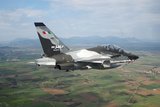How temporary funding could affect the US military’s critical acquisition programmes
CR would delay the award for a battalion-sized order of Patriot missiles. (Photo: US Army)
Several US military critical acquisition and development programmes could see their next phases delayed as the end of the fiscal year approaches and the National Defence Authorisation Act (NDAA) for FY2025 continues to be evaluated by Congress.
If lawmakers do not approve the Biden administration’s budget by 30 September, the government will be forced to operate under continuing resolutions (CR), which will affect the schedule of the US Army’s UAS, air and missile defence efforts, the US Navy’s shipbuilding, munition and aircraft programmes and the US Air Force’s nuclear modernisation.
Last week, the secretaries of the US services submitted letters to the Committees on
Already have an account? Log in
Want to keep reading this article?
More from Defence Notes
-
![Ireland spells out $2.3 billion shopping list in five-year defence spending plan]()
Ireland spells out $2.3 billion shopping list in five-year defence spending plan
Ireland’s multi-annual investment in capital defence spending is set to rise from €300m in 2026 to €360m in 2029–2030 with major upgrades across land, air, maritime and cyber domains.
-
![Canada to deepen integration of multi-domain capabilities to strengthen its defences]()
Canada to deepen integration of multi-domain capabilities to strengthen its defences
The Canadian Department of National Defence has created new organisations to manage the procurement and integration of all-domain solutions and allocated US$258.33 million to strengthen production capacities.
-
![US National Security Strategy prioritises advanced military capabilities and national industry]()
US National Security Strategy prioritises advanced military capabilities and national industry
The 2025 NSS has emphasised investment in the US nuclear and air defence inventory and national industry, but it leaves multiple unanswered questions on how the White House will implement this approach.
-
![Canada set to look away from its neighbour and across the Atlantic for partners]()
Canada set to look away from its neighbour and across the Atlantic for partners
While non-EU UK struggles to join the Security Action for Europe initiative, which provides loans for defence programmes, Canada has become the first country outside Europe to get access – and did so for a nominal fee.
-
![NATO experiments with solutions to integrate networks, AI and uncrewed systems]()
NATO experiments with solutions to integrate networks, AI and uncrewed systems
During the latest edition of the NATO DiBaX, the alliance tested multiple capabilities to inform requirements for future efforts.
-
![Leonardo unveils plans for Michelangelo air defence dome]()
Leonardo unveils plans for Michelangelo air defence dome
The new multi-layered defence system will harness AI to neutralise airborne threats and protect Europe from Russian aggression.


























